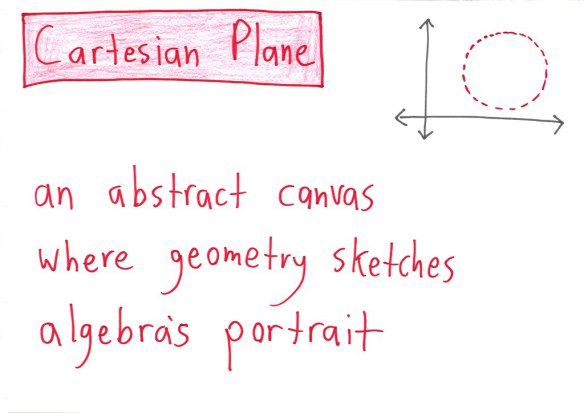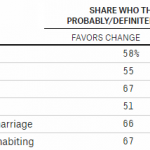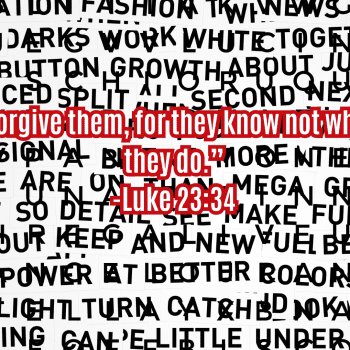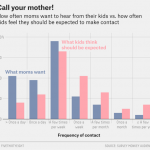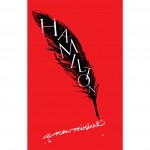When I was googling things like “two people looking at each other,” trying to find a picture for my post on why “You’re perfect!” and “I love you!” aren’t the same sentiment, I wound up discovering this word.
Mamihlapinatapai: a look shared by two people, each wishing that the other will offer something that they both desire but are unwilling to suggest or offer themselves
There’s a little more at the wiki page.
If you’re trying to express other important truths succinctly, Math with Bad Drawings has a delightful series of haikus. Here’s my favorite.
And speaking of mathematics, I loved this Wired feature on the guy who curates the Online Encyclopedia of Integer Sequences.
This giant repository, which celebrated its 50th anniversary last year, contains more than a quarter of a million different sequences of numbers that arise in different mathematical contexts, such as the prime numbers (2, 3, 5, 7, 11 … ) or the Fibonacci sequence (0, 1, 1, 2, 3, 5, 8, 13 … ). What’s the greatest number of cake slices that can be made with n cuts? Look up sequence A000125 in the OEIS. How many chess positions can be created in n moves? That’s sequence A048987. The number of ways to arrange n circles in a plane, with only two crossing at any given point, is A250001. That sequence just joined the collection a few months ago. So far, only its first four terms are known; if you can figure out the fifth, Sloane will want to hear from you.
A mathematician whose research generates a sequence of numbers can turn to the OEIS to discover other contexts in which the sequence arises and any papers that discuss it. The repository has spawned countless mathematical discoveries and has been cited more than 4,000 times.
But if you’d like to talk about slightly more workaday math, The Daily Beast did a very good piece calling out bad statistics writing and giving some guidelines for when you are figuring out whether to frame some rate as “per day” “per year” “per capita” etc.
[C]onsider the item about Periscope, a Twitter app for streaming live events. The 40 years of videos sounds impressive at first glance but divided by 10 million users, that amounts to just about two minutes per user per day. But this per-user, per-day metric is misleading as well.
First, users are not created equal. Only a proportion of those registrants will be actively using the app. So we should divide the minutes viewed by the average number of viewers per day.
Second, the popularity of streams is extremely uneven. One of the first events that placed Periscope on the map was illegal streaming of the Mayweather-Pacquaio fight in May. A splurge of viewing occurred on a single day. When the data contain spikes like this, one should be warned against using a per-day average.
Ok, that clears me out of queued math links (for now!) so why not try some biology? My friend Brienne passed along this video, which answers the question that I hadn’t really paused to notice was a hard question: How do trees get water all the way from their roots to the rest of them?
She recommends (and I concur) that you pause the video whenever the guy poses a question and try to guess the answer.
When I paused and tried to figure out the answer to
Jul vf gur gerr oevatvat hc fb zhpu zber jngre guna vg arrqf sbe cubgbflagurfvf?
My best guess was:
Gb xrrc sebz orvat gbb synzznoyr?
Speaking of seeing the world through new eyes, I liked reading my friend Elliot’s comments on Harry Potter after reading through the series for the first time in a number of years:
For Rowling, magic begins as a sort of cliche that she’s joking around with (turning things into animals, making things fly around, etc.), which is then grounded in a gradually unveiled magical parody of the ordinary world (Gringotts, the Ministry of Magic, the Daily Prophet, etc.). As the series goes on, the theory of magic is never a point of interest, except when used to explain why some difficulty or other is not easily surmounted (e.g. “Food is one of the five principle exceptions to Gromp’s law of elemental transfiguration.”) In fact, if we strip away the fact that Harry Potter is a wizard and does magic and all of that, and perform a formalist analysis of the series and its world, we realize that the series is mostly just about a schoolboy who is being trained in a specific craft, while repeatedly avoiding being killed by one of the famous masters of that craft, who is using his skills to dominate and murder people. Analogous stories could be written without the use of magic at all. Magic makes the story fun and amusing, and provides a number of nifty devices for the plot (e.g. the use of memory, prophecy, and the causal efficacy of sacrifice), but a story that had most of the same basic features could be constructed about, say, a blacksmith or an engineer living in a culturally stable non-liberal society. A realist re-telling of Harry Potter would be interesting, and I think the fact that this is conceivable indicates one of the strengths of the series: it is not primarily a fantasy, so much as it is a fantastic framing of a basically human drama. The fantastic elements add flair and excitement, but, to borrow Dumbledore’s words, really it’s more about the importance of friendship, loyalty, servants and folktales.
And, finally, one more act of re-envisioning: a little feature on the Deaf West production of Spring Awakening, that’s coming to Broadway and melding spoken and sung English with ASL.
For more Quick Takes, visit Conversion Diary!


